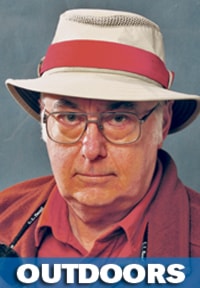In his Message From the Minister in the 2015 Albert Guide to Sportfishing Regulations, Environment-Sustainable Development Minister Kyle Fawcett wrote “the recent closure of the commercial fishery in Alberta is also expected to open up better opportunities for recreational fishing.”
Many thoughtful Alberta anglers are putting their glee on hold, realizing it could just as easily have gone the other way. The commercial closure resulted from the report of one expert that Alberta’s commercial fishery was unsustainable, i.e. that there simply are not enough fish. The way things are going in Alberta, you have to wonder how long before Alberta’s recreational fishing is found to be unsustainable and summarily ended, outlawed.
The high point of angling in Alberta is generally considered to have been 1985, when there were 343,310 licensed anglers in Alberta. Then a steady decline set in to where, in 2010, there were 252,030 licensed Alberta anglers despite a more than a million population increase; a decline of anglers as a percentage of population from 14.3 to 6.4 per cent. When Sport Fishing in Alberta, 2015 is published, expect a further steep decline in angler numbers, reflecting the sad fact that the Alberta fishing experience is sad and getting sadder fast.
Ralph Klein made much of being a fisherman, but his premiership from 1992 to 2006 choked off money and manpower from Alberta’s Fish and Wildlife Division and from fisheries management and habitat protection initiatives. Famously fishy Premier Alison Redford finished off the century-old Fish and Wildlife Division completely in 2012.
We were shocked in 1994 when a zero limit on bull trout was imposed in all of Alberta, and, in a classic, almost comic, example of too much, or too little, too late, a year later, in 1995, the seriously endangered bull trout was officially designated Alberta’s fish emblem, the provincial fish.
In the two decades since, not one bull trout has been stocked in the province, nor any other practical measure taken to prevent the ongoing extinction of our provincial fish. But the zero limit has become a symptom of a fishery in deep trouble and a cheap nostrum, a placebo, even, to appear to be concerned, while doing nothing effective and practical to cure the disease.
With this year’s zero limit imposed on arctic grayling, virtually all Alberta native fish, including pike in too many places, are subject to zero limits, or tag limits, like walleye. Exceptions are Alberta’s gazillions of native stunted perch and non-native, stunted brook trout and, so far, reasonable populations of rocky mountain whitefish. At the same time, the few fisheries biologists we have left exhibit a prejudice against non-native species, such as the brown trout that have evolved and surmounted some of the real threats to our native fish.
Overfishing by anglers has not caused the crisis. The real cause is the cumulative effect of resource development run amok, aided and abetted by a negligent government, resulting in the destruction of fish habitats, particularly headwaters spawning streams.
Alberta’s top trout stream, the North Raven River, is threatened with gravel-mining its source springs. Next best, the Crowsnest River is threatened with strip mining for coal. The Muskeg River, formerly Alberta’s best bull trout stream, has been destroyed by blatant native poaching the gutless government would not prosecute. Now siltation from too many resource roads and too much water withdrawn for hydraulic fracking are finishing off the Muskeg and harming the Little Smoky, formerly Alberta’s finest grayling river.
The extent of destruction of headwaters spawning streams, particularly by clear cutters is terrifying. Alberta’s Forestry Service pushed Spray Lakes Sawmills of Cochrane to clear cut along Hidden Creek, the most important spawning stream for Oldman River drainage bull trout.
Lorne Fitch was once of the elite crew of Alberta biologists; in the 1970s he worked on the North Raven River restoration. Hidden Creek now needs restoration, judging from what Fitch has to say about it and some of his pictures of the mess: “The most telling is the aftermath of logging, with the fellow stirring up sediment from the substrate. That is in the middle of the area used by bull trout for spawning. I did redd counts on Hidden Creek last fall. The number of redds used to be about a hundred/year in Hidden Creek. I could only find 15 last fall, but the Forest Service contends they had Spray Lakes Sawmills follow all the guidelines for logging and the company did an excellent job. The pictures speak for themselves!”
Fitch writes well on how we are destroying our fisheries … and fish. Contact him at lafitch@shaw.ca and ask him, especially, for his essays Two fish … One Fish … No Fish and In the Bedrooms of the Bull Trout.
Meanwhile, we have an election coming up. Can we sustain yet another premier seeking a mandate who claims to be an avid angler, yet seems to have no idea of the sorry state of Alberta’s fish and fishery?
Bob Scammell is an award-winning columnist who lives in Red Deer. He can be reached at bscam@telusplanet.net.
